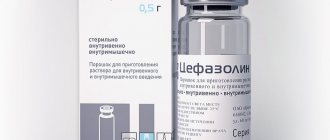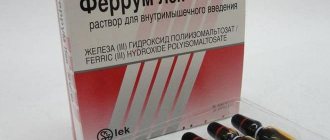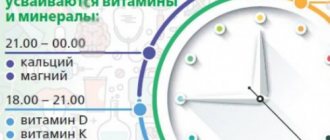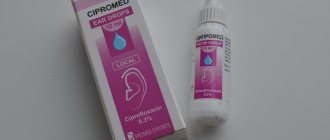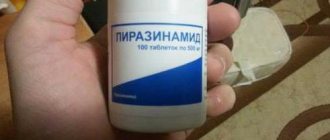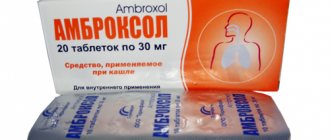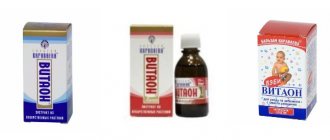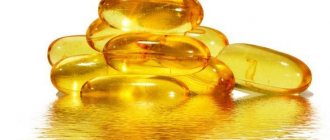This Hungarian antispasmodic has been well known since Soviet times as an extremely effective remedy for relieving spasmodic pain. It is still considered the most popular and fastest tool for the general relief of spasms of smooth muscle tissue. No-spa is produced in ampoules and tablets, the instructions for use for which describe in some detail how both forms of the drug should be taken. Most often used as a fast-acting analgesic to relieve pain symptoms.
The popularity of No-shpa is due to the fact that it is effective; after its use, adverse reactions very rarely occur, especially when compared with anticholinergic antispasmodics. But the drug has contraindications and is not suitable for everyone, so it is prescribed by a doctor after all the necessary studies, including tests. Self-medication is fraught with unpredictable consequences.
Indications for use
Indications for the use of No-shpa are the prevention and treatment of organ functional disorders and pain caused by muscle spasms:
- digestive tract with ulcers, dyskinesia, gastritis, pancreatitis, spastic enteritis, colitis or proctitis, as well as with spasms of the cardia or pylorus, irritable bowel syndrome, flatulence, spastic constipation, tenesmus;
- hepatobiliary system with inflammation of the gallbladder or its ducts, hyperkinetic form of biliary dyskinesia, cholelithiasis;
- urinary system with kidney stones, urolithiasis, pyelitis, cystitis, neurogenic bladder.
Indications for treatment of the reproductive system with the drug are as follows:
- excitability of the uterus during pregnancy;
- spasm of the uterine pharynx during childbirth;
- prolonged opening of the uterine pharynx;
- afterpains;
- threatened abortion;
- pain during menstruation.
No-shpu is also used for spasms of peripheral and cerebral vessels, postoperative colic as a result of gas retention, postcholecystectomy syndrome, and preparation for instrumental examination.
Why do they inject No-shpa?
The product helps relieve pain in various diseases.
The instructions indicate the following indications for use:
- cholelithiasis;
- high blood pressure;
- migraine with hypertension;
- ulcerative lesions of the digestive tract;
- inflammation of the mucous membrane of the stomach or peritoneum;
- esophageal spasm;
- inflammation of the mucous membrane of the small or large intestine;
- inflammation of the wall of the gallbladder or the mucous membrane of the renal pelvis;
- infection of the bile ducts;
- enlargement and inflammation of the anal papillae;
- kidney stone disease;
- the presence of stones in the ureter;
- cystitis;
- postoperative period;
- injuries.
For women, the medicine is prescribed for painful menstruation. In rare cases, the doctor will prescribe medication for tumors to relieve pain.
Contraindications
A contraindication to the use of drotaverine, like many other drugs, is the presence of severe disorders of the heart, liver and kidneys, manifested by insufficiency of their functions.
Also, No-shpa is not used during breastfeeding, since drotaverine and other representatives of this group can pass into milk.
The use of the drug in children is allowed from 6 years of age, but only in tablet form, since studies of the effect of the injection solution have not been conducted, which is why parenteral use is contraindicated.
Taking the drug is contraindicated in case of hypersensitivity to the active substance or other components.
The drug can be used only if precautions are taken in case of low blood pressure due to the possibility of collapse, as well as during pregnancy.
Indications and contraindications
No-shpa is most often used in pediatric gastroenterology. Indications for prescribing the drug are:
- Diseases of the gallbladder and bile ducts . The pathology of these organs is often accompanied by spasms. Such diseases include: inflammation of the gallbladder (cholecystitis) and bile ducts (cholangitis), cholelithiasis (calculous cholecystitis, cholangiolithiasis, cholecystocholangitis). It is worth noting that with the development of acute colic, a solution is used for intramuscular and intravenous administration. No-shpa is often used for inflammatory diseases of the stomach and intestines: gastritis, peptic ulcer, enteritis, colitis.
- Diseases of the urinary system . The need to use drugs in this case is also associated with spasms of smooth muscles. These diseases include: inflammation of the kidneys (pyelonephritis), inflammation of the bladder (cystitis), urolithiasis, etc. It is worth noting that with the development of renal colic, preference is given to a solution for intramuscular and intravenous administration, which makes it possible to achieve the desired concentration of the drug in a shorter time. drugs in the blood.
- It is used as an adjuvant in gynecology for dysmenorrhea . Dysmenorrhea is a pathological process in which girls experience severe pain in the lower abdomen during menstruation. In addition to pain, girls often experience nausea, dizziness, headaches, bloating, increased body temperature and other symptoms.
- Quite often, no-shpa is used as an antipyretic at fever . The fact is that there are two types of fevers in children: “pale” and “pink”. "Pink" is more favorable. “Pale” fever is accompanied by symptoms of microcirculation disorders, which are clinically manifested by pallor and “marbling” of the skin. The children's limbs are cold. There is a pronounced feeling of cold and chills. In order to eliminate such fever, you will need no-spa or another antispasmodic for parenteral (intravenous or intramuscular) administration. In addition to analgin, a solution of drotaverine (“No-shpa”) is administered at a dose of 0.1 ml per 1 year of life. The dosage of this product is given for informational purposes only. The choice of medication, as well as its dosage, should be made by the attending physician.
No-shpa is often used as an antipyretic.
Like any other medicine, no-spa has its contraindications:
- Severe liver, kidney, heart failure.
- The period of breastfeeding (lactation).
- Hypersensitivity to the active substance and other excipients included in its composition.
- Children's age up to 6 years. It is worth noting that in pediatric practice this drug is used at an earlier age.
- Malabsorption syndrome associated with lactose and galactose intolerance. Malabsorption is a malabsorption of a substance in the small intestine. As a rule, it is associated with a deficiency of a substance or enzyme that takes part in the absorption of this substance.
Side effects
Adverse events that occur when taking the drug are rare. Most often, they negatively affect the nervous system, digestive tract, heart and blood vessels.
- Circulatory system: tachycardia, feeling of heat, arrhythmia, atrioventricular blockade, decreased pressure, up to the development of collapse.
- Nervous system: headache, dizziness, sleep disorders.
- Digestive tract: nausea, constipation.
There is also information about side effects such as respiratory depression, increased sweating, and allergies. Local redness or a burning sensation may occur.
special instructions
- increased caution is required when treating patients suffering from atherosclerosis of the coronary vessels or low blood pressure;
- the issue of driving a vehicle when using the drug is decided individually, especially when its negative effect appears. It is advisable to avoid driving and operating complex machinery when using an antispasmodic in injection form. If dizziness develops after using No-shpa, driving and performing this type of work is prohibited;
- No-shpu can be used in the complex treatment of hypertensive crisis;
- According to numerous studies, No-shpa does not have teratogenic or embryotoxic effects. However, you need to remember the possible risks to the fetus, and use the product only according to strict indications and with caution. The use of the drug during pregnancy in the form of injections is undesirable;
- the use of an antispasmodic during labor can provoke the development of postpartum atonic bleeding;
- the drug contains sodium disulfite (metabisulfite) as an excipient, which must be taken into account if you have hypersensitivity to it;
- When administering No-shpa parenterally, patients suffering from hypotension should be positioned horizontally due to the likelihood of collapse.
Drug interactions
- drotaverine, like other papaverine derivatives that inhibit the PDE enzyme, can reduce the antiparkinsonian effect of levodopa, as well as increase muscle rigidity and tremor;
- when the drug is combined with other antispasmodics, mutual potentiation of the antispasmodic effect occurs;
- the injectable form of the antispasmodic enhances the decrease in blood pressure caused by taking antidepressants, quinidine or procainamide;
- this drug reduces the spasmogenic properties of morphine;
- when taking phenobarbital, the antispasmodic effect of no-shpa increases;
- due to the high degree of binding to plasma proteins (over 80%), the possibility of competition of the antispasmodic with drugs that have the same feature cannot be excluded. Therefore, in the case of taking a combination of drugs with a high affinity for plasma proteins, the toxic effects of the drugs taken may increase.
Analogs
No-spa in ampoules is often produced by Russian manufacturers under the international name “Drotaverin”. All its analogues have the same composition, but different bioequivalence and bioavailability. Manufacturers of drotaverine:
- Moskhimfarmpreparaty;
- Altair LLC;
- ZAO Binnopharm;
- Biochemist;
- Dalkhimpharm;
- DECO company;
- Biomed named after I.I. Mechnikov;
- VIFITECH;
- Armavir biofactory;
- Ellara LLC (Drotaverin-Ellara).
- NOSH-BRA is available in tablets and ampoules. Manufacturer Bryntsalov-A, Russia;
- Spasmol also has tablet and injection dosage forms. Produced by the Russian company Pharmstandard-UfaVITA;
- Spakovin comes in ampoules and tablets. The production belongs to MJBiopharm, India.
Also, the production of a similar medicine belongs to the Belarusian Borisov ZMP.
Structural analogues having a different trade name are represented by the following means:
Terms and conditions of storage
Ampoules should be stored at a temperature of 15-25 degrees, protected from sunlight and access to children. The antispasmodic is suitable for use for 5 years from the date of release.
A medicine called no-spa has become widespread. This drug is used, if not to treat diseases, then to relieve unpleasant and painful symptoms. Practice shows that the drug no-spa, despite its effectiveness, has many contraindications. Before taking the medicine, you should consult your doctor. But first, the doctor must examine the patient, and then prescribe treatment based on the diagnosis. No-spa injections instructions for use provide for the use of the drug for severe spasms to relieve pain. Injections differ from tablets only in that they act much faster on the source of pain, eliminating the unpleasant symptoms of pain.
Features of the drug No-shpa
The main advantage of the drug no-spa is its effective masking of the symptoms of various diseases. The remedy is used in extreme cases with the development of such serious diseases as kidney, liver, stomach and other types of tumors.
The drug should not be used by persons with a tendency to develop allergic reactions, which can ultimately lead to anaphylactic shock. The drug is also dangerous for people who have problems with diseases such as bronchial asthma and other types of ailments associated with the respiratory system. The use of noshpa for such patients can lead to asphyxia and obstruction of the respiratory organs with transition to pulmonary edema.
As you can see, the drug is quite powerful, so its incorrect use can lead to the most unpleasant consequences. Before administering the drug intramuscularly, be sure to read its instructions for use. It is important to know not only the features of use and dosage, but also the presence of contraindications. We will learn more about the drug no-shpa from the material presented below.
Instructions for using No-shpa in the form of injections
The drug no-spa is based on drotaverine hydrochloride, which relieves pain symptoms. The drug has an antispasmodic effect, due to which the medicine in the form of injections has a wider range of applications than the tablet form. No-spa in the form of ampoules is used for the following diseases:
- During attacks of gallstone disease.
- For postoperative conditions.
- In the period after an abortion.
- For peptic ulcers of the stomach and intestines.
- For urolithiasis, as well as when stones pass through the ureters.
Medicine no spa solution for injection can be used for both intravenous and intramuscular use. The intravenous method of using no-shpa involves diluting the medicine with saline solution. You can use no-shpu in the form of injections for a dropper. This option of intravenous administration of the drug allows for a prolonged effect of the drug. This administration option is often used after operations. One unit of the medicine contains 40 mg of the active substance drotaverine hydrochloride.
Compound
The antispasmodic agent is produced in the form of an injection solution for intravenous and intramuscular administration.
The active component is drotaverine hydrochloride in an amount of 40 mg per 1 ampoule. No-spa solution contains magnesium stearate, povidone, talc, corn starch, lactose. The package contains 5 or 25 ampoules of 1 ml.
Indications for use
No-spa helps relieve painful spasms in those places where there are muscles. The pharmacological agent in the form of injections quite effectively copes with its purpose, eliminating pain quickly and effectively. Most people, when developing headaches, prefer drugs such as Citramon or Askofen. But with severe and prolonged pain, no-spa helps. In this case, the product is used mainly in the form of tablets. To relieve pain symptoms from cuts, open and closed injuries, no-shpa is used in the form of injections.
In addition, the medicine is so effective that even with the slightest dislocations or sprains it is used to get rid of unpleasant pain symptoms. It should be noted that no-spa has an important advantage over non-steroidal drugs. The advantage is the absence of a negative effect on the gastrointestinal tract. This suggests that the drug eliminates pain without causing harm to the body.
Dosage and application features
The instructions for use of the drug no-shpa indicate dosages for adults and children. The drug can be used even by children over one year old, but only as directed by the attending physician. For children from one to six years old, the dosage of no-shpa is 120 mg per day. Moreover, this dose should be divided into three times, which avoids the development of allergic reactions to the drug.
For children from 6 years old to 12 years old, the dosage of no-spa per day is 200 mg. It is recommended to divide this dosage into two times. For adults, the dosage of drotaverine hydrochloride is 240 mg per day. This dosage can be divided into 2-3 times according to the decision of the attending physician. For acute pain, the drug is injected directly into the source of pain. For example, if pain develops due to kidney or urolithiasis, then no-shpu should be administered in an amount of 80 mg intravenously. The duration of administration of this dosage should not be faster than 30 seconds.
During labor or after an abortion, no-shpa can be administered intravenously and intramuscularly in an amount of 80 mg with a time interval of at least 2 hours. When using the drug at home without a doctor's prescription, you should carefully read the instructions.
How and for how long it works
The active substance has powerful antispasmodic activity. After intravenous and intramuscular administration, relaxation of smooth muscles occurs. Drotaverine hydrochloride inhibits the activity of the PDE type 4 enzyme. As a result, the amount of cyclic adenosine monophosphate increases, the concentration of calcium ions and the degree of pain decrease.
The drug is effective for neurogenic pain.
The medicine causes relaxation of the muscles of the digestive and urinary systems, biliary tract. Has a vasodilating effect. After oral administration, blood circulation improves and blood pressure decreases to normal levels. What do you think are the most important factors when choosing a medical facility?
Drotaverine hydrochloride binds to plasma proteins, penetrates tissues and is evenly distributed throughout muscle structures. Subject to biotransformation in the liver. It is completely eliminated from the body within 3 days.
Effective in 5-10 minutes.
It has a pronounced and long-lasting analgesic effect. Does not affect the central nervous system. The effect lasts up to 3-4 hours. If the condition does not improve within 2-4 hours after the maximum dose, you should consult a specialist. You should not take other medications with No-shpa.
Dosage
Injections are given 1 to 3 times a day. The instructions indicate the daily dosage for adults and children:
- from 1 year to 6 years - 120 mg;
- from 6 to 12 years - 200 mg;
- from 12 years - 240 mg.
The recommended daily amount should be divided into 3 times for children, and from 12 years old - into 2 times. After an abortion or during childbirth, the medicine is administered intravenously at 80 mg. The interval between administrations is at least 2 hours.
Contraindications
But spa injections instructions for use have a mandatory clause that indicates the reasons for contraindications to the use of the drug. These contraindications are:
- Having an allergy to the composition of the drug.
- While carrying a child at any stage of pregnancy.
- During the period of feeding the baby with breast milk.
- If you have the disease bronchial asthma.
- For heart rhythm disturbances.
- If the patient exhibits signs of low blood pressure.
Children are often allergic to lactose, which is contained in tablet form. Before giving your child a No-Spa tablet, you should make sure that he does not have an allergy.
Dosage of the drug
Parents often ask questions: “Is it possible to give no-shpa to children? How much to give no-shpa to a child? How to give? According to the instructions for the drug, no-spa is used in children over 6 years of age. From 6 to 12 years it is recommended to take one tablet (40 mg) 1-2 times a day. In children over 12 years of age, it is possible to use one tablet (40 mg) 1-4 times a day.
As mentioned earlier, no-shpa is also used in children under 6 years of age (from 1 year). At the same time, doctors monitor the baby’s condition.
The optimal dosage regimen is determined by the attending physician. It is necessary to strictly observe the compliance of the dosage form of no-shpa with the indications for its use and dosage regimen.
It is necessary to strictly observe the indications for use and dosage regimen.
No-spa in the form of injections: what is the medicine for?
The drug is used in ampoules in those exceptional cases when taking tablets is impossible. The reasons why the tablets may be prohibited are because the body is lactose intolerant. Even if the body does not have an individual intolerance to the drug, lactose has a negative effect on the digestive system. These include stomach pain, as well as nausea and, in rare cases, vomiting.
If a person has signs of impaired glucose absorption, then no-shpa is prescribed for them in the form of injections. Intravenous or intramuscular administration of anesthetic for pancreatitis is prescribed. After all, this type of illness often manifests itself in the form of the development of signs of vomiting. Tablets for such symptoms will simply be useless. Due to the fact that injections have a quick antispasmodic effect, many people strive to use the medicine in this form, especially for pain in the back, stomach, kidneys, etc.
When does the medicine start to work?
Drotaverine is much more effective than Papaverine. No-spa in tablet form is absorbed by the body much faster than drugs based on papaverine. Often, pain relief begins to appear 10-15 minutes after taking the pill.
Intramuscular and intravenous injection allows you to achieve the desired result after 5 minutes. That is why no-shpa injections have become widespread.
It is important to note that no-spa injections can be stored for no more than three years from the release date. The drug should be stored at temperature conditions, which should range from 15 to 25 degrees.
It is important to know! If you make a choice, which is better and more effective, the medicine No-shpa or Drotaverine. Both drugs are based on drotaverine hydrochloride, only no-shpa is a foreign analogue of Drotaverine. Accordingly, the difference lies in cost, but since No-shpa is a foreign medicine, many patients and doctors prefer it.
In conclusion, it is worth noting that the cost of No-shpa in the form of ampoules ranges from 100 to 500 rubles. It depends on the pharmacy and the number of ampoules in the drug. The manufacturer of both tablets and injections is No-shpa, located in Hungary.
No-Shpa injections are a medicine that is in demand in the post-Soviet space. Despite its effectiveness, it has contraindications. Before administering the contents of the ampoule, you must be examined by a doctor. The active ingredients of the drug in an injection are prescribed for severe spasms to reduce or remove the pain threshold.
The product in liquid form is different from those supplied to the market in capsule form. The former are more effective and quickly eliminate the source of pain and negative symptoms
Other antispasmodics used in pediatrics
In addition to no-shpa, antispasmodics such as:
- Riabal. The active ingredient is profinium bromide. Riabal is the drug of choice in young children.
- Dicetel.
- Mebeverine.
- Papaverine.
No-spa is the most common antispasmodic. Like any other drugs, it has its own indications and contraindications. The advantage of this drug is the availability of oral and parenteral forms, which allow it to be used as emergency treatment for many conditions in children. Do not self-medicate; if your child experiences pain or discomfort, consult your pediatrician.
Features of No-Shpa
The advantage of No-Shpa is its ability to quickly eliminate the symptoms of various diseases. It is prescribed as the main drug in rare cases for the development of such serious diseases as oncology of the digestive organs and other negative neoplasms.
The product should not be used by people who are prone to developing allergic rashes, which can cause anaphylactic shock or even death. Active substances are also dangerous for those people who have problems with a number of diseases associated with respiratory function and other types of gastrointestinal diseases. There is No-Spa in injections prescribed to such patients, this will cause the death of respiratory function with the transition to swelling of vital organs.
No-Shpa is quite effective, so its irrational use can cause negative consequences. Before intramuscular administration of active substances, it is imperative to study the instructions, which describe the use of the drug. It is important to pay attention to the dose and a number of aspects when it can be used and when it cannot be used.
How to inject No-Shpa intravenously and intramuscularly
The medicine is based on drotaverine hydrochloride, which actively relieves pain thresholds. The drug has an antispasmodic effect, as a result of which drotaverine is characterized by a wider spectrum of effects than those substances that enter the body from the capsule. What No-Shpa is for:
- For intestinal or stomach colic, immediately after surgery;
- In the period after termination of pregnancy;
- When ulcers form in the gastrointestinal tract;
- For urolithiasis, for kidney stones.
The infectious drug No-Shpa can be injected either into a vein or into a muscle. The first method of application involves diluting the active substances mixed with sodium chloride. An ampoule is used for drip injection of active substances into a vein. This type of administration of active substances achieves a longer lasting effect. It is used after surgery. One ampoule contains up to forty mg. active substance that was described above.
Active substances of analgin or noshpa, which is more effective
The active substances of these two drugs have different characteristics and indications: their effects are different. If the active substances of the first block the production of substances that irritate nerves and fibers and stop unpleasant sensations, then the second acts differently. They relieve spasm of smooth muscles, so the drugs differ in their action. Where the first is effective, the second will become useless. The industrial production of ampoules is due to the use of the drug by those who suffer from lactose intolerance. The ampoules do not contain this component. Also, this form of drug administration helps to achieve faster results.
What diseases does injection of the drug into a vein and muscle help with?
This method will help relieve contraction of smooth muscles, improve labor activity, and will become effective after undergoing surgery on the gastrointestinal tract or another cavity. Also, intravenous administration quickly relieves discomfort from genitourinary diseases and stomach colic.
Can the drug cause death in a patient?
Such cases are very rare in practice. Injecting No-Shpa can lead to suffocation or even death, and anaphylactic shock is also common. Therefore, the rationality of injections should be determined by a doctor.
Can it help with migraines?
On the practical side, injections for migraines can be achieved by reducing the spasm of elastic tubular formations in the brain. After complete restoration of blood flow, the cerebral cortex begins to be actively supplied and filled with all necessary substances, thereby eliminating decay products. Migraines no longer bother me. No-Spa for increased pain in the head area will be effective if the pain syndrome causes increased pressure in the arteries. There are such copies of the drug:
- Direct action - drotaverine.
- Indirect - papaverine hydrochloride.
If girls experience pain during menstruation, then the administration of the drug will undoubtedly relieve it from the consequences. But this method of treatment should not be used every day. No more than three injections per menstrual cycle. Only then No-Shpa will help you every time, 10, 100 and 200 times.
When is it recommended to take
The drug eliminates painful spasms in those areas where there are muscles. Pharmacological components in infectious form quickly eliminate all painful manifestations and do this as effectively as possible. Most patients with the development of migraine prefer Citramon or Askofen.
At the same time, it is more rational to choose it in the form of capsules; ampoules will be effective for severe pain, injuries to the limbs, deep cuts, open and closed fractures.
The drug is effective and even for minor dislocations, it is prescribed to get rid of negative symptoms and increased pain. The advantage of injections is the absence of consequences that can affect the stomach and intestines. This indicates that the product only affects the painful area without causing any negative effects.
Medicine dosage
The leaflet for the use of the product indicates the dose for adults and children. The drug is allowed to be used even by children from 12 months, but only if it was directly indicated by the doctor. For children from one year to preschool age, the dose is one hundred and twenty mg per 24 hours. Moreover, this amount of the drug should be evenly distributed over several doses, which avoids the appearance of a rash.
For children of school age and up to twelve, the dose of the drug in 24 hours is equal to two hundred milligrams. The amount is divided into two doses and for an adult it is equal to 250 mg per 24 hours. It also needs to be divided into several doses after agreement with the attending physician. In case of severe pain, the drug is injected directly into the center of the threshold formation. For example, if the development of pain is felt in the kidneys, the drug must be administered in an amount of eighty mg. directly into a vein. This procedure should not last longer than half a minute.
How to prick
If taking tablets is contraindicated, the drug is prescribed in ampoules. Injected into a muscle or venous vessel. The dosage is indicated in the instructions. Draw the required amount of liquid medicine into a syringe and treat the skin at the injection site. Injected intramuscularly slowly. Painful sensations occur during insertion. The syringe is not intended for reuse.
No-spa intravenously can only be prescribed by the attending physician. In acute conditions, incl. against the background of colitis, the pain quickly disappears after injection of 40-80 mg per day. You should not inject the medicine into a vein yourself.
When prohibited
The instructions contain a number of contraindications that must be studied before administering the drug:
- Presence of rashes or other form of allergy to the active substances of the drug;
- While waiting for a child or feeding him breast milk without prior permission from a gynecologist;
- Diseases affecting the respiratory tract;
- When the usual and normal rhythm of the heart is disrupted;
- If the patient has symptoms of low pressure in the arteries.
Children often develop skin rashes due to the lactose molecules contained in the capsules. Before giving it to a child, you need to make sure there is no allergy and inject the drug into a vein or muscle.
Negative consequences
No-Shpa stands out for its long-lasting, positive effects, but it also has negative aspects that arise when the prescribed dose is not followed. This happens when regular intake of active substances reduces their effectiveness and effect. The patient, who himself wanted to increase the dose in order to reduce the pain threshold, puts his life at risk.
The main side effects of No-Shpa include the following manifestations:
- Reduced pressure in the arteries;
- Development of a sensation that precedes vomiting;
- Accelerated heartbeat;
- Rashes on the body;
- Swelling that appeared in the place where the drug No-Shpa was injected;
- Anaphylactic shock can often manifest itself, which in many cases ends in death.
Side effects can occur not only during an increase in the given dose, but also with daily use of the drug. If its effectiveness becomes less obvious, it must be replaced with another product from the line, which has a distinctive composition.
No-spa in injections: instructions for use
Injections of this antispasmodic are prescribed for all diseases in which spasmodic attacks are frequent. This is typical for diseases of the kidneys, gastrointestinal tract, genitourinary tract, pancreas, gynecological pathologies such as algodismenorrhea.
In addition, injections are given when the patient has contraindications to taking the medication orally, which are determined by the treating specialist. The duration of therapy is determined by the attending physician. Independent use of the product is allowed, but not longer than three days.
Injections are contraindicated for patients under 18 years of age. For an adult, the maximum volume for consumption is 240 ml. Injected 1-3 times. Further dosage and frequency of injections are determined according to the patient’s condition.
Dosage
The instructions clearly define dosages for children and adults. It is allowed to be used by children over one year of age, but only on the recommendation of a doctor and in a hospital so that the patient is under constant supervision. This is done because clinical trials have not been conducted on minors, therefore, in the instructions for the drug, age under 18 years is indicated as a contraindication.
From one year to 6 years, the daily dose is 120 ml, which is divided into three doses. This makes it possible to reduce the likelihood of allergic reactions. Children aged 6-12 years can be administered up to 200 ml per day, divided into two doses.
The dose for an adult is 240 ml per day. It is possible to divide it into 2-3 doses. In the presence of acute pain, the injection solution is injected directly into the painful area. If the pain is caused by an attack of kidney or urolithiasis, then the drug is administered intravenously, starting from 80 ml. Moreover, the administration should be carried out within 30 seconds and no faster.
During childbirth or after an abortion, intravenous or intramuscular administration of the drug in a volume of 80 ml is possible, maintaining an interval of at least 2 hours. If there are no specific instructions from the doctor, the daily dosage is 40-240 ml (divided into three doses) into a vein or muscle. For acute colic caused by cholelithiasis or urolithiasis, 40-80 mg of the drug is prescribed intravenously.
How to inject No-shpa intravenously and intramuscularly
Injections are used both intravenously and intramuscularly. In this case, the active ingredients are diluted with sodium chloride. A drip ampoule is used to administer the drug into a vein. This practice makes it possible to achieve a longer action of the drug components. Often used after surgery.
When does the medicine start to work?
When using tablets, the result appears within 10-15 minutes. Injections significantly accelerate the reduction in pain intensity, and relief occurs within 5 minutes. It is thanks to this effect that injections have become very popular and widespread.
Possible adverse reactions and overdose
Any medicine can have unwanted effects. No-shpa is no exception. This is especially true for overdoses. This is possible with frequent use of the drug, then its effectiveness begins to decrease, and the patient begins to independently increase the dose, hoping for a quick effect. This approach is very dangerous and leads to unpredictable consequences.
Possible side effects:
- decreased blood pressure;
- nausea and vomiting;
- tachycardia;
- rash on the body;
- the appearance of swelling at the injection site;
- anaphylactic shock, often ending in death.
Such phenomena are caused by excessive drug use. If the effectiveness decreases, you should leave it for a while and start using some alternative remedy.
An overdose also does not bring anything good and leads to disturbances in rhythm, conduction, and finally, cardiac arrest and death. In case of overdose, it is necessary to provide the patient with maintenance therapy under full medical supervision.
